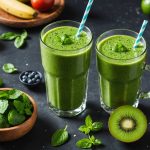Mastering Influencer Marketing: Unbeatable Strategies for UK Beauty Brands
In the ever-evolving landscape of the beauty industry, influencer marketing has emerged as a pivotal strategy for UK beauty brands aiming to enhance their visibility, build trust, and drive sales. Here’s a comprehensive guide on how to master influencer marketing, complete with practical insights, real-world examples, and actionable advice.
Understanding the Power of Influencer Marketing
Influencer marketing is more than just a trend; it’s a proven method for connecting with your target audience in a more authentic and engaging way. According to the Kolsquare State of Influencer Marketing Report, 67% of UK brands use sponsored posts as their primary method of collaborating with influencers[1].
In the same genre : Developing an Inspiring Digital Literacy Program for UK Seniors: A Comprehensive Guide
Why Influencers Matter
Influencers have built trust with their followers, often through years of consistent content creation and engagement. When an influencer endorses a product, it carries more weight than a traditional advertisement because it comes from a source that the audience respects and trusts.
For instance, CeraVe, a leading skincare brand, has seen significant success by partnering with professional influencers like Dr. Aamna Adel, a consultant dermatologist. Dr. Adel’s credibility and authority in the skincare niche have helped CeraVe promote its products effectively, with one of her TikTok posts garnering €175k in earned media value[1].
Also to read : Developing an Inspiring Digital Literacy Program for UK Seniors: A Comprehensive Guide
Choosing the Right Influencers
Selecting the right influencers is crucial for the success of your campaign. Here are some key considerations:
Aligning Values and Audience
It’s essential to choose influencers whose values and audience align with your brand. Nikin Clothing, a Swiss sustainable clothing brand, achieved remarkable success by partnering with influencers who shared their commitment to environmental sustainability. This alignment ensured authentic and effective promotion, resulting in over 2.5 million impressions and 266 sales directly attributable to the influencer marketing efforts[2].
Micro, Macro, and Mega Influencers
The beauty industry benefits from a diverse range of influencers, from micro-influencers with highly engaged audiences to macro and mega influencers with broader reach.
- Micro Influencers: These influencers typically have between 10,000 to 100,000 followers. They offer high engagement rates and are often more cost-effective. For example, Gymshark’s influencer campaign includes micro-influencers like @_fitnesswithkals, who has 57k followers but delivers significant engagement and conversions[1].
- Macro Influencers: With 100,000 to 1 million followers, macro influencers provide a balance between reach and engagement. CeraVe’s partnership with Dr. Aamna Adel, who has over 1.6 million followers on TikTok, is a prime example of leveraging macro influencers effectively[1].
- Mega Influencers: These are celebrities or influencers with over 1 million followers. While they offer massive reach, their engagement rates can be lower. Fenty Beauty’s launch campaign, which included PR packages sent to influencers of all skin tones, is a notable example of using mega influencers to drive inclusivity and sales[1].
Effective Influencer Marketing Strategies
Here are some unbeatable strategies to enhance your influencer marketing campaigns:
Sponsored Posts
Sponsored posts are the most popular way for brands to collaborate with influencers. These posts can be photos or videos that creatively showcase the brand and its products. For instance, Melis Ekrem’s sponsored post for Dior highlights the brand’s limited-edition lipstick, ensuring alignment with the brand’s messaging[1].
Product Gifting
Product gifting involves sending free products to influencers for review or recommendation. This approach is low-cost and can generate authentic content across various platforms. However, it offers less control over the content created. Holland and Barrett’s gifting strategy to influencers like @caitlynvanbeck is a good example of this approach[1].
Affiliate Marketing
Combining gifting with affiliate marketing allows influencers to earn commissions through referral links or discount codes. This dual approach amplifies awareness and provides measurable ROI. Gymshark’s long-term partnerships with influencers, who regularly promote the brand through affiliate marketing, have been highly successful[1].
Leveraging Social Media Platforms
Social media is the heartbeat of influencer marketing, with platforms like Instagram, TikTok, and Facebook offering diverse opportunities to engage with your audience.
Instagram is a visual-centric platform ideal for showcasing beauty products and services. Beauty brands can post user-generated content, influencer collaborations, and before-and-after transformations to drive interest and build trust. For example, Happy Skin Food’s collaboration with Mindful Chef resulted in 318K plays on a single video, generating an estimated Earned Media Value (EMV) of €1.8K[1].
TikTok
TikTok has become a powerhouse for short-form, engaging content. Its hashtag challenges and duet features make it perfect for creating viral content. CeraVe’s campaign featuring TikTok influencers like Hayley Kalil, Caleb Simpson, and Bobbi Althoff, which included comedic content with actor Michael Cera, won The Grand Prix for Social & Influencer award in Cannes[1].
Measuring Success and ROI
To ensure your influencer marketing campaigns are effective, it’s crucial to measure their success and ROI accurately.
Key Metrics
- Engagement Rate: This includes likes, comments, shares, and other interactions with the content.
- Reach and Impressions: The number of people who have seen your content.
- Conversions: Sales, sign-ups, or other desired actions resulting from the campaign.
- Earned Media Value (EMV): The monetary value of the media coverage generated by the campaign.
For example, Bloo’s “The Great Loo Review” campaign on TikTok generated high-performing content with over 30 million likes and significant engagement, leading to a recognition at the PRWeek UK Awards 2024[1].
Practical Insights and Actionable Advice
Here are some practical tips to make your influencer marketing campaigns more effective:
Use Influencer Marketing Platforms
Tools like Kolsquare can streamline your influencer selection and outreach process. These platforms provide valuable insights into influencers and help you identify the best content creators for your brand.
“As tools like Kolsquare make it easier to understand, if you know who your target audience is and then go with specific keywords, a specific age range or something that you’re really looking for, tools can definitely help.” – Andra Dorolti, Senior Partnerships Manager at CurrentBody[1].
Focus on Authenticity
Authenticity is key in influencer marketing. Ensure that the influencers you partner with genuinely believe in your products and align with your brand values.
Diversify Your Influencer Pool
Using a mix of micro, macro, and mega influencers can help you reach different segments of your audience. CeraVe’s strategy of working with professional influencers like Dr. Aamna Adel, as well as other macro and micro influencers, has been highly effective in showcasing the benefits of their skincare products[1].
Case Studies: Real-World Success Stories
Here are some detailed case studies that highlight the success of influencer marketing in the beauty industry:
CeraVe’s Influencer Campaign
CeraVe’s campaign featuring Dr. Aamna Adel and other influencers has been a resounding success. By leveraging the authority and credibility of professional influencers, CeraVe has managed to promote its skincare products effectively, resulting in significant engagement and conversions.
| Influencer | Platform | Followers | Engagement Rate | EMV |
|---|---|---|---|---|
| Dr. Aamna Adel | TikTok | 1.6M | 1.13% | €175k |
| Dr. Aamna Adel | 650K | 1.13% | ||
| Hayley Kalil | TikTok |
Mindful Chef’s Influencer Collaboration
Mindful Chef, a UK-based healthy recipe box delivery service, has effectively used influencer marketing to connect with health-conscious consumers. By partnering with influencers like Happy Skin Food and Bettina’s Kitchen, Mindful Chef has managed to drive engagement and conversions through relatable, high-impact content.
| Influencer | Platform | Followers | Engagement | EMV |
|---|---|---|---|---|
| Happy Skin Food | 413K | 318K plays | €1.8K | |
| Bettina’s Kitchen | €9.3K |
Influencer marketing is a powerful tool for UK beauty brands looking to stand out in a competitive market. By choosing the right influencers, leveraging social media platforms effectively, and measuring success accurately, brands can achieve substantial ROI and long-term growth.
Key Takeaways
- Align Influencer Values: Ensure that the influencers you partner with align with your brand values and target audience.
- Use Diverse Influencers: Leverage a mix of micro, macro, and mega influencers to reach different segments of your audience.
- Focus on Authenticity: Authenticity is crucial in influencer marketing; ensure that influencers genuinely believe in your products.
- Measure Success: Use key metrics like engagement rate, reach, and EMV to measure the success of your campaigns.
By mastering these strategies, UK beauty brands can harness the full potential of influencer marketing, building strong connections with their audience and driving meaningful growth in the beauty industry.







